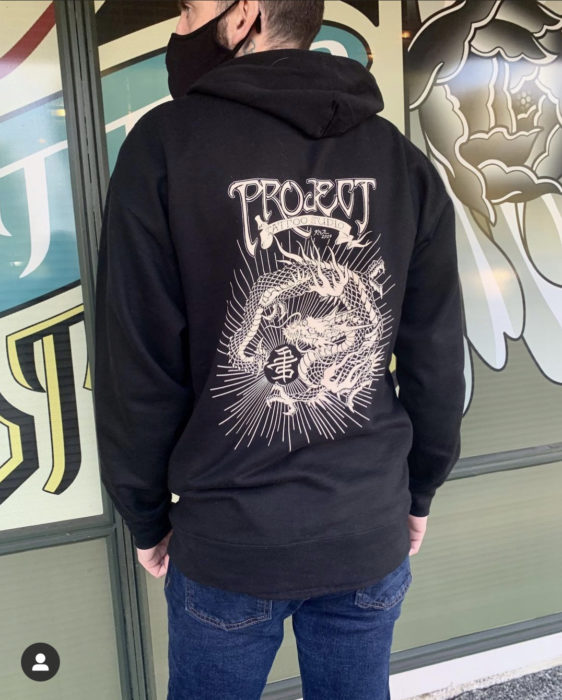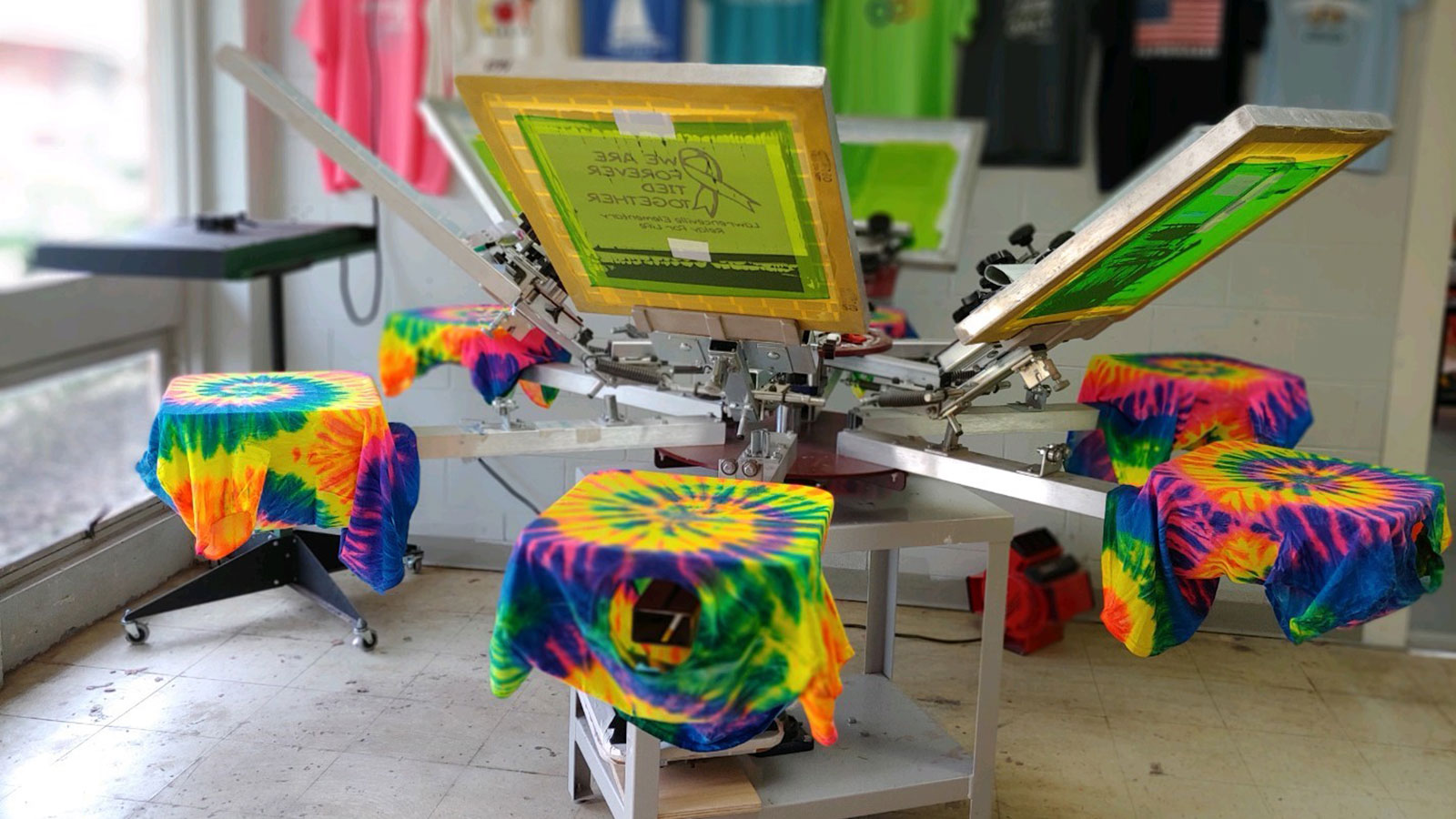Premium Screen Printing Kit for Business Startups
Premium Screen Printing Kit for Business Startups
Blog Article
Screen Printing Uncovered: Whatever You Need to Understand About Tee and Garment Printing Techniques
If you have actually ever questioned how those dynamic styles finish up on your favorite tee shirts, you're in the ideal area. Screen printing is a remarkable approach that integrates art with technique, using unlimited opportunities for creative thinking. Recognizing the fundamentals, from devices to ink selections, can considerably impact your outcomes. Prepared to explore the important components that make display printing an art form? Let's discover the information that can raise your projects.
The Fundamentals of Display Printing: Just How It Functions
When you dive right into screen printing, you'll uncover it's both an art and a science. At its core, display printing entails creating a pattern, or display, that permits ink to go through just in certain locations (screen printing kit). You begin by picking your layout and preparing your display with a light-sensitive solution. As soon as you subject this emulsion to light, it sets, leaving your layout as an adverse area.
Next, you'll mix your inks and prepare your printing surface. Placement the screen over the material, then utilize a squeegee to push ink through the display onto the garment. This process requires accuracy, as you want clear, dynamic prints. After printing, you'll treat the ink with heat, guaranteeing it sticks to the material and lasts via laundries. Each step is necessary, and understanding them will boost your display printing abilities, transforming simple garments right into unique, meaningful pieces.
Sorts Of Display Printing Strategies
Once you grasp the fundamentals of display printing, it's time to check out the different methods that can raise your styles. One prominent approach is typical screen printing, where ink is pressed via a stenciled display. This technique is great for bold, vibrant colors. There's water-based ink printing, which supplies a softer feeling and is environmentally friendly, yet it calls for a various strategy to healing.
An additional alternative is plastisol printing, recognized for its toughness and brilliant shades, making it a preferred for lots of brands. Experiment with halftone printing to create slope effects and detailed styles.
Necessary Equipment for Screen Printing
To achieve magnificent lead to screen printing, having the best tools is basic. You'll require a sturdy screen printing frame, which holds the mesh that moves your layout onto the garment. Next off, buy top quality mops; these are vital for using ink uniformly across the screen. You'll likewise call for a good direct exposure unit to develop your screens, as well as a washout booth for cleaning them after usage. A dependable warm source, like a conveyor clothes dryer or warm press, is crucial for curing your prints to assure durability. Don't fail to remember a correct work area, geared up with tables and storage for your materials. Protective gear, such as gloves and masks, will certainly keep you risk-free from chemicals and inks. With the right tools, you'll be well on your way to producing professional-quality prints.
Picking the Right Inks and Products
When selecting inks and products for display printing, you require to consider the kind of ink that works ideal for your project. Believe about fabric compatibility to guarantee your styles look great and last lengthy. Additionally, explore environment-friendly ink options to make your printing procedure a lot more sustainable.
Sorts Of Screen Inks
Selecting the best display ink is essential for achieving vivid, durable prints that fulfill your job's requirements. There are a number of types of screen inks to analyze. Specialized inks, such as glow-in-the-dark or metallic, can add one-of-a-kind results to your styles.

Fabric Compatibility Considerations
Understanding fabric compatibility is vital for attaining top quality screen prints, particularly since different materials respond distinctively to numerous inks. Always test your inks on sample fabric to ensure they stick properly and maintain color honesty. Additionally, maintain in mind that material weight and structure can impact the last result, so choosing the ideal ink and material combination is vital for your job's success.
Eco-Friendly Ink Options
Environment-friendly inks are ending up being a prominent selection for display printers who wish to minimize their ecological impact while keeping high quality. When picking inks, think about water-based inks, which are next page less harmful and simpler to tidy up compared to conventional solvents. These inks bond well with materials, providing vibrant results without harmful chemicals. You could likewise check out eco-solvent inks that utilize less unstable natural substances (VOCs), making them a much safer alternative for both your wellness and the earth.
In addition, look for inks made from renewable energies, such as soy or vegetable-based options. By selecting the ideal inks and products, you'll not just develop sensational designs but also contribute to a much more sustainable printing process. Make the switch, and your prints will certainly show your dedication to the environment!
Preparing Your Style for Screen Printing

Submit Layout Requirements
To assure your layout looks dynamic and sharp on material, you'll need to pay close focus to submit layout demands for screen printing. Make sure your design has a clear history to prevent unwanted white edges on your prints. Maintain color modes in mind; CMYK is common for screen printing, so convert your RGB creates appropriately.
Shade Separation Techniques
Shade splitting up is a crucial step in preparing your style for display printing, and understanding it can considerably improve your print high quality. You'll require to damage your design right into individual shades, as each color requires a separate screen during printing. This precision try this website not just ensures precise shade representation yet also enhances the printing procedure.
Resolution and Size
Achieving the ideal lead to screen printing begins with ensuring your design has the best resolution and size. Preferably, your artwork must be at the very least 300 DPI (dots per inch) for sharp, clear prints. If you make use of lower resolution, your final product may look pixelated and amateur.
When it concerns dimension, think about the dimensions of your print location. Style your artwork to match the last print dimension, preferably creating it in the actual measurements you'll be publishing. In this manner, you'll prevent any unforeseen scaling concerns.
Always check your layout in both vector and raster styles. Vector graphics can be scaled without shedding top quality, making them perfect for display printing. Preparing properly will guarantee your layout looks outstanding on every garment!
Step-by-Step Screen Printing Process
Display printing is a dynamic process that allows you to develop lively designs on various surfaces. To get started, you'll need a screen, emulsion, and your picked go right here ink.
Pour ink onto the screen and utilize a squeegee to press the ink with the stencil onto the material. Lift the screen thoroughly and let the print dry. You've efficiently display published your design.
Tips for Effective Screen Printing Projects
While you're diving into your display printing projects, bear in mind that preparation is key to success. Beginning by gathering all your materials-- inks, squeegees, displays, and garments. A tidy office aids protect against unwanted mistakes, so tidy up prior to you start.
Following, confirm your art work is high-resolution and effectively sized for your garment. Check your screen for correct exposure and tidy it extensively to avoid smudges. When blending your inks, follow the producer's guidelines to accomplish the appropriate uniformity.
Throughout printing, apply even stress with your squeegee for regular outcomes. Do not hurry; take your time to confirm each print satisfies your criteria. After printing, allow your garments dry completely before taking care of or packaging them.
Finally, constantly keep a sample of your help future referral. In this manner, you can evaluate your progress and improve your strategies with time. Satisfied printing!

Often Asked Questions
The length of time Does It Require To Establish a Screen Printing Work?
Setting up a display printing work commonly takes about thirty minutes to an hour. You'll prepare the displays, mix inks, and change the press. The moment differs based upon complexity and experience, so remain organized!
Can I Print on Different Material Keys In Making Use Of the Very Same Strategy?
Yes, you can print on different textile types using the same technique, but you'll need to adjust your inks and settings. Some textiles absorb ink in different ways, so exploring guarantees the best outcomes for each and every product.
What Prevail Blunders to Prevent in Screen Printing?
When display printing, prevent common errors like making use of the incorrect ink, ignoring correct direct exposure times, or skipping pre-press checks. Constantly check your arrangement and preserve clean screens to ensure high quality results each time.
Exactly How Can I Effectively Tidy and Preserve My Display Printing Devices?
To correctly tidy and maintain your display printing devices, you ought to routinely clean displays with suitable solvents, inspect squeegees for wear, and assure all devices are saved dust-free and dry. Consistency improves and avoids expensive repairs efficiency.
Is Screen Printing Ecologically Friendly Compared to Other Approaches?
Screen printing can be much more ecologically pleasant than other techniques, particularly if you use eco-conscious products and water-based inks. By picking lasting products and practices, you reduce waste and reduce your influence on the world.
Screen Printing Uncovered: Everything You Need to Know Concerning Tee Shirt and Garment Printing Strategies
At its core, screen printing involves creating a pattern, or display, that permits ink to pass with just in certain locations. Placement the screen over the textile, then utilize a squeegee to press ink via the screen onto the garment. One preferred method is traditional display printing, where ink is pressed via a stenciled display.When choosing inks and materials for display printing, you need to take into account the kind of ink that works ideal for your project.
Report this page